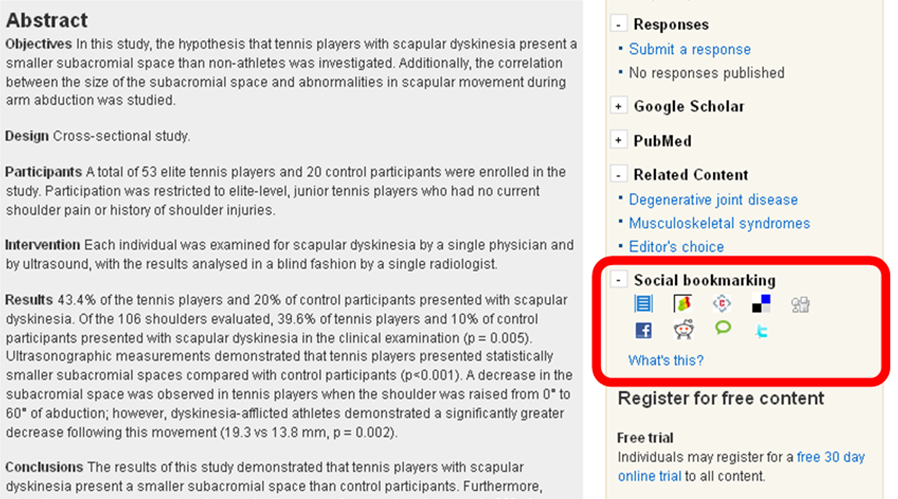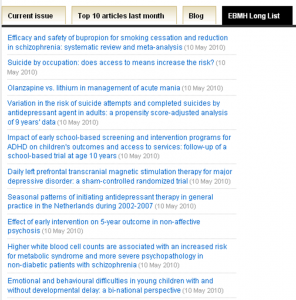What is social bookmarking and why is it useful?
26 May, 10 | by BMJ
Have you ever emailed friends or colleagues with a link to a website that you thought they might find interesting? If so, you have participated in social bookmarking. Tagging a website and saving it for later is the fundamental purpose of social bookmarking. However, instead of saving sites to your individual web browser, you are saving them to the Web. It is precisely because your bookmarks are online that you can so easily share them with your colleagues and friends. The video below will show you how to get started on a popular social bookmarking site called delicious:
http://www.youtube.com/watch?v=HeBmvDpVbWc
Not only can you save your favourite websites and send them to your friends, you can also look at what other people have found interesting enough to tag. Most social bookmarking sites allow you to browse through the items based on most popular, recently added, or belonging to a certain category like shopping, technology, politics, blogging, news, sports, etc. You can even search through what people have bookmarked by typing in what you are looking for in the search tool. In fact, social bookmarking sites are often used as intelligent search engines.
So, how do we use social bookmarking on the journal sites?
You may well have noticed that we include links to social bookmarking, news and networking sites on the right-hand side of all our journal articles (see screenshot below). By clicking on one of the social bookmarking icons, you can easily tag a particular article and bookmark it for reading/sharing later. The sites that we link to include:
- CiteULike: Designed specifically for the needs of scientists and scholars.
- Connotea: Service for scientists, researchers and clinicians.
- Delicious: Popular site for storing, sharing and discovering web bookmarks.

In addition to allowing our users to bookmark our articles, we use this technology to organise some of our own references. On the Evidence-Based journals (Evidence-Based Medicine, Evidence-Based Mental Health and Evidence-Based Nursing) a Connotea account is used to manage the ‘Long List’ of references that each issue is chosen from. On a weekly basis, the Connotea account is updated with a new list of references, which then automatically produces an RSS feed. This RSS feed is filtered (according to the particular journal) and ends up on a homepage widget in the form of PubMed references (see below). This enables us to keep our homepages looking fresh with minimal editorial input and gives users the opportunity to see which articles are still of high interest despite not making it into the journal.
